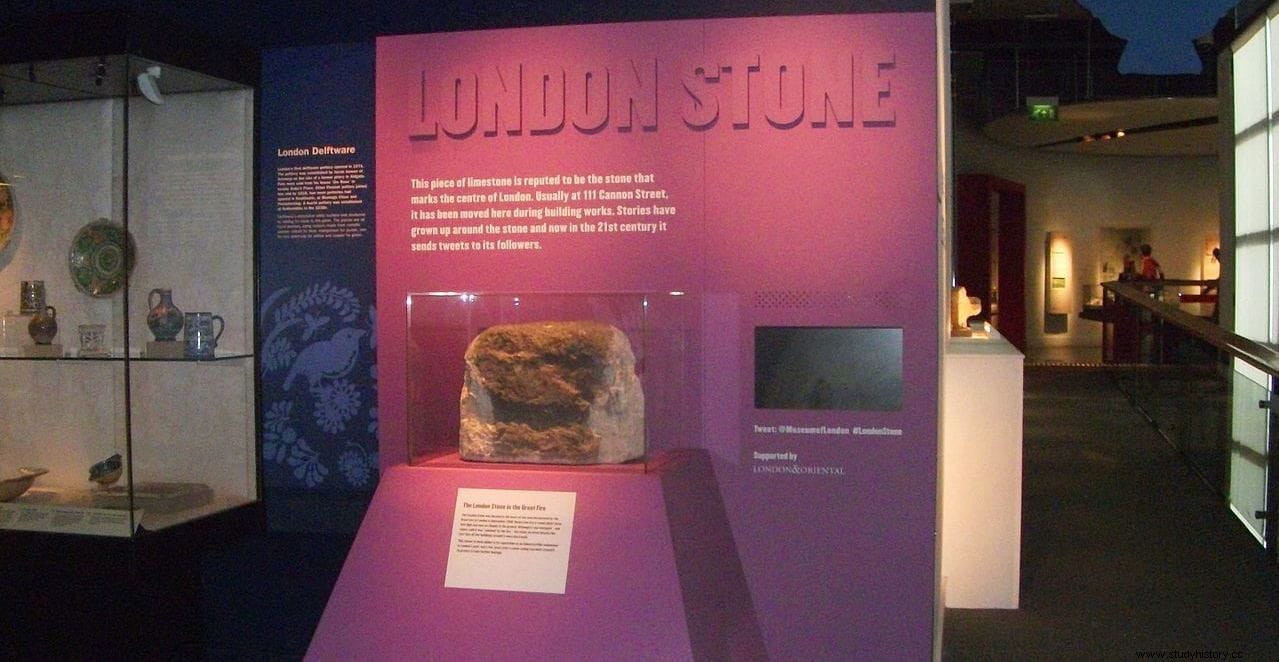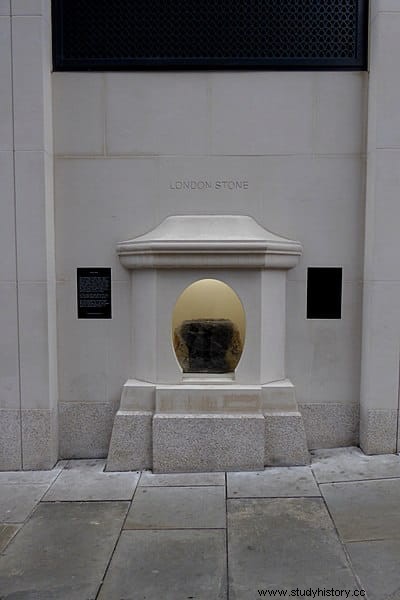In the British Isles they are well served with mysterious stone icons . The most famous is the Stone of Destiny , which is kept in Edinburgh Castle and placed under the British throne during the coronation of kings. But there are others.
One of them, equally curious, is located in the heart of London, at 111 Cannon Street (opposite the station of the same name), embedded in one of the walls of a WHSmith branch, where it goes quite unnoticed:the London Stone it is an irregular block (about 53 cm wide by 43 cm high and 30 cm deep) of limestone that is believed to have been part of something much larger. Just no data.

The first time it is mentioned in documents is in the Survey of London elaborated by John Stow in 1598, with a reference to the 10th century, at the time of the Saxon king Aethlestan.
Moreover, in the Middle Ages it became popular and the monarchs adopted the custom -later lost- of ritually beating the stone with its swords, as Shakespeare reflects in his play Henry VI; that popularized it to the point where names abounded in the environment of places and even nicknames of allusive people. In the time of Elizabeth I, poems were made about it and in the 17th century pieces were sold as souvenirs. hammered out.

But archaeologists believe that its origin dates back to the time of the Roman occupation . In fact, some think that the stone is only the visible part of some construction that today it would remain buried and inscrutable, while others suggest that it was probably transferred there from Bath for some memorial.
Difficult to know since everything around it has been urbanized. The fence that surrounded it until recently was from the 19th century and was placed due to the need to protect the rock from vandalism, just as a couple of centuries before it had been given a niche (which is now once again the means chosen to protect and display it).
The truth is that there are theories to give and take, some really bizarre:the stone from which Arthur extracted Excalibur ; a Roman milestone, as Charles Dickens put it in his London Dictionary; a talisman even older than the Roman presence used by the druids in their cults, as was proposed -without any basis- in the 18th century; a fetish or totem from old London, a nineteenth-century theory that merged with another that identifies it with the Palladium original of Brutus, character of uncertain historicity...
Archeology has been able to establish that it was part of the entrance to a Roman architectural complex , an administrative building, perhaps the Praetorium of Londinium. But, for now, given the impossibility of digging, the mystery is still up in the air.
